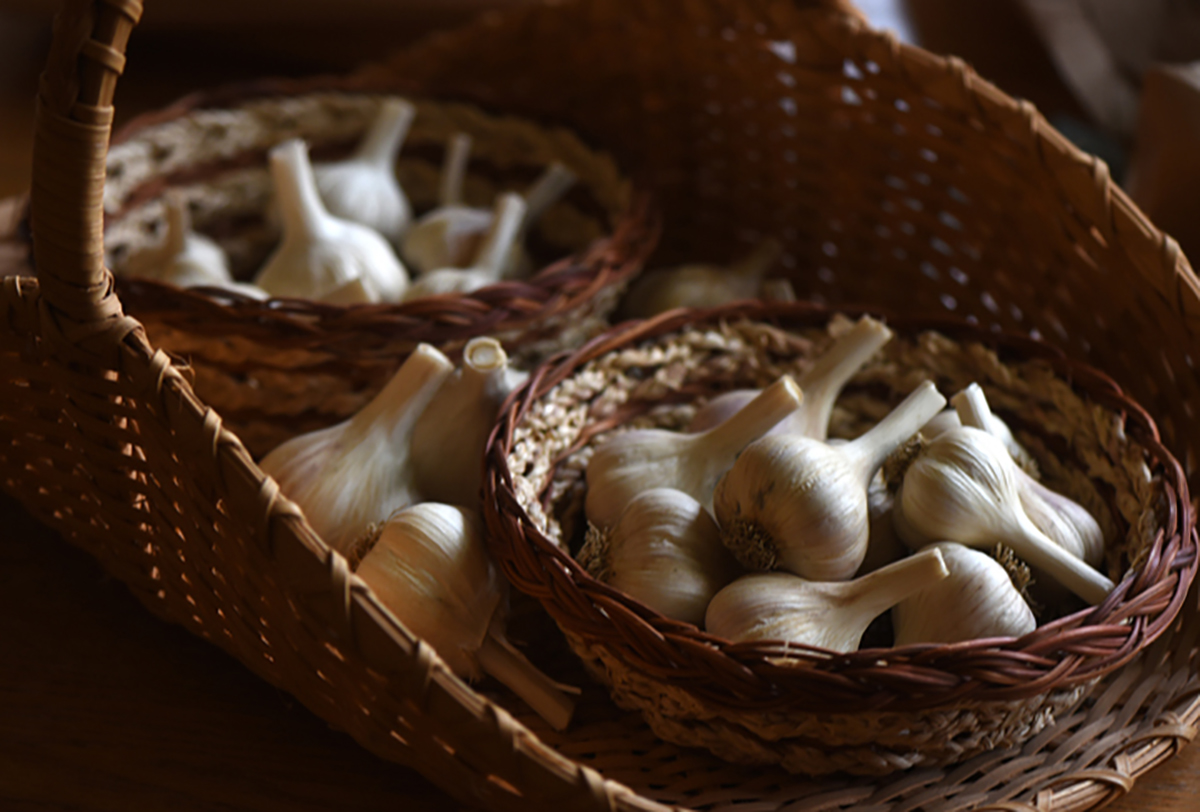
The soil is soft and cool, perfect for planting fat cloves of garlic which are gently pressed into the soil.
For decades, October was the right time to plant, but now November offers the best weather for getting the cloves in the ground. October plantings were sprouting, which is acceptable a couple of times, but that third flush of greens takes its toll, diminishing the size of the bulb harvested next summer.
Starting with the right variety is imperative. Unless the grocery store garlic is locally grown, it’s a risk to plant, as it might not be hardy and could be sprayed with something which prevents the cloves from sprouting. Find garlic bulbs, called seed garlic at your local nursery, a farmer’s market or the farm itself. It’s great to find the heads directly from the farmer as it will save money. Locally grown garlic is the same as seed garlic, only cheaper when sold as food.
Garlic from the garden is unmatched in flavor, like everything else we harvest. Prepare the planting bed with plenty of organic matter like compost.
The garlic bulb is separated into cloves, the bigger the clove, the larger the bulb should be when the clove matures in mid-summer. Save the smaller bulbs, we’ll talk about what to do with them later. Plant the cloves about three inches deep and six apart, a sprinkling of Bulbtone organic fertilizer won’t hurt either. No need to water the cloves in, there’s plenty of moisture in the soil and on the way, this fall and winter.
Mulch the bed with a thick layer of straw, it acts as a blanket for the cloves below and will make a big difference in the size of the bulbs. The mulch also acts as a weed preventer when the garlic sprouts. Garlic hates competition, keep the bed weeded next summer.
The smaller, leftover bulbs can be planted along the edge of the beds, close together. They are one of the six harvests garlic growers get from planting garlic. In the spring they will emerge as greens with the crocus and can be harvested as needed. The greens go dormant in mid-summer and return again as things cool off and will be there until a hard freeze hits. Leave the small bulbs in place for a perennial garlic green harvest every year.
The greens from the big bulbs can be harvest sparingly early in spring, remember the top feeds the bulb below. There’s a center fat bud which appears early in, but is only there for a couple of weeks, then it unfolds into the flat bladed foliage. Get to that center bud for the second of the six harvests. In June, hardneck varieties (which are what are mostly planted in the north) will send up a seed head called a scape. It must be removed so the plant puts all of its energy into producing nice sized heads. The scapes are a wonderful delicacy in the kitchen; I love making pesto out of them, but they can be roasted and used many different ways. There’s enough energy left in the stalk to produce the little seeds, even when detached from plant. Leave them in the garden and use the small seeds (bulbils) raw to nibble on for harvest number four.
My friend, “The Garlic King of Millvale,” calls the bulbs which are harvested early “juicy,” as they are filled with garlic oil. The papery sheath has not formed yet, the bulbs are smaller, milder and tasty. That’s the fifth harvest.
Finally, in July when half the greens turn brown the full-sized bulbs are harvested. In nice, soft soil they can gently be pulled out, if the ground is dry, a garden fork can be used to get the garlic out of the ground.
The bulbs are hung in a warm dry place like a toolshed or garage to cure the bulbs for storage. Leaving the stalks on the bulbs will make them last longer too. The goal for garlic fanatics like myself is to have enough well-cured garlic to last a year, until the next harvest.
Curing is affected by summer humidity, that’s the wild card for the process. Sometimes the garlic lasts all year, other seasons, it starts to get soft in mid-winter. When that happens, the garlic gives off a unique “fragrance.” That’s the signal to put the cloves into a food processor with some good olive oil and then freeze the slurry in ice cube trays. Never store garlic and oil at room temperature, it could lead to botulism. Some favorite varieties include ‘Music,’ ‘German White,’ ‘Spanish Roja,’ ‘Georgian Fire,’ ‘Chesnok Red,’ and many others.
Garlic is one of the easiest plants to grow with few pests or diseases. Only home gardeners enjoy all six harvests. Be sure your significant other eats some too, you’ll cancel each other out. As far as the rest of the world is concerned, well, at some point they’re going to figure out you’re a garlic lover like me.
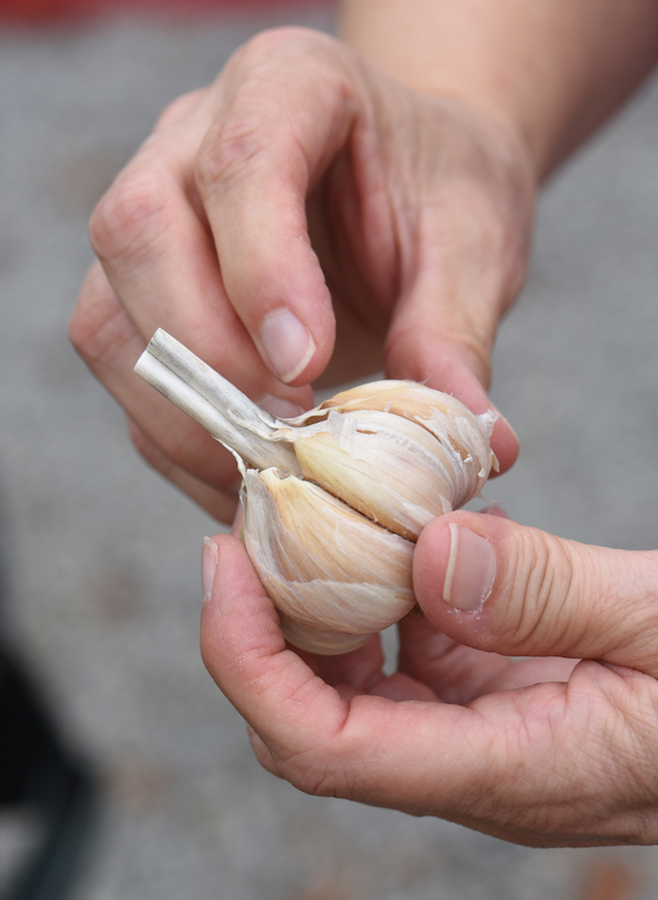
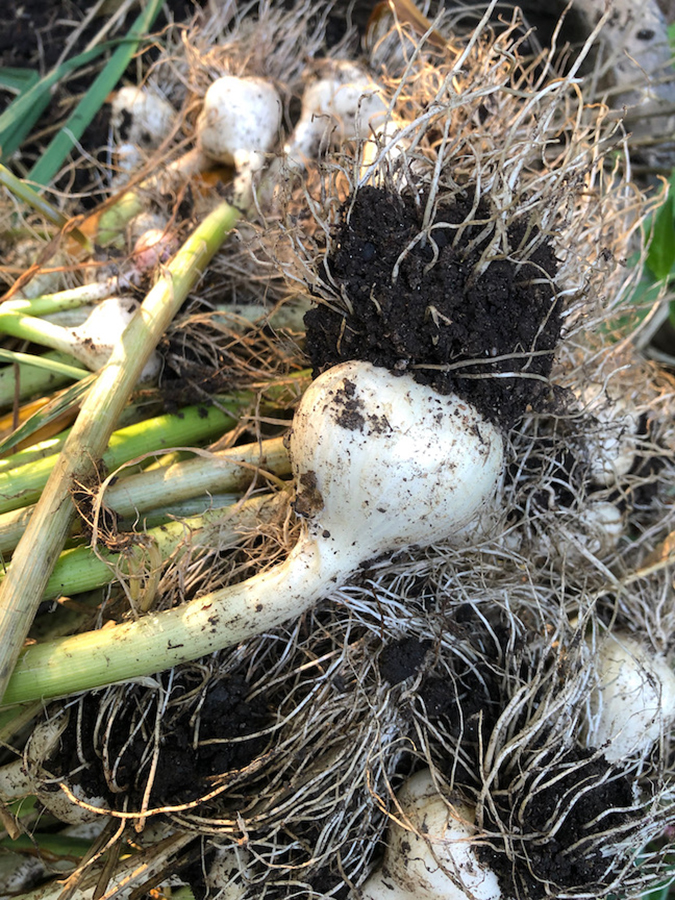
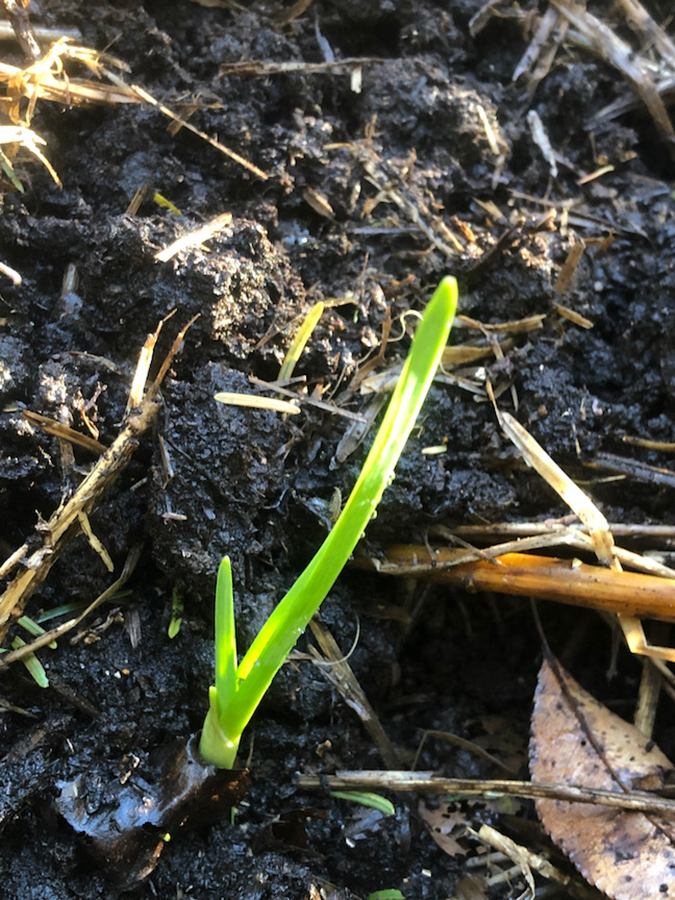
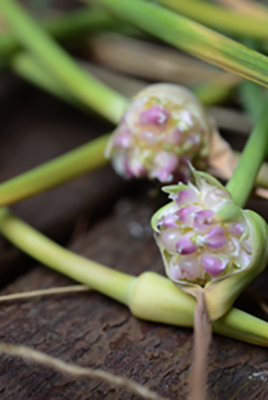
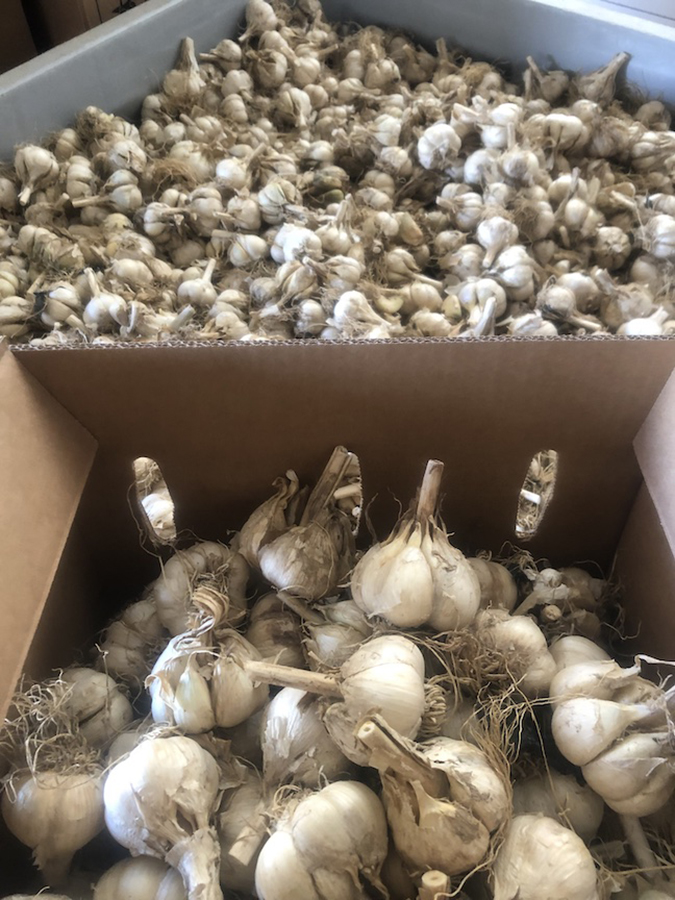

Leave A Comment